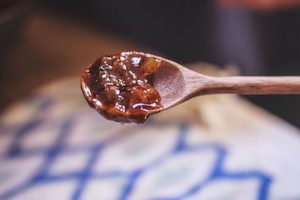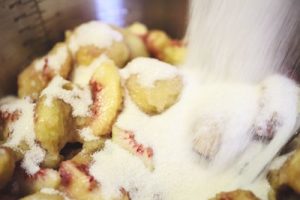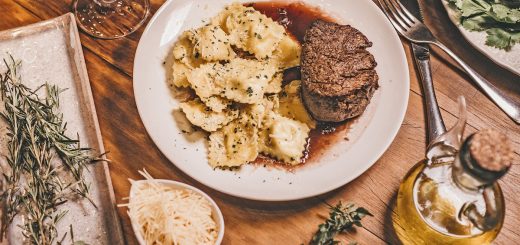Perfect Set For Your Jam
 Getting the perfect set for your jams is truly an art – however, it’s not impossible to get it just the way you like it! You will quickly learn how firm you like your jams and can adjust your cooking times accordingly. Different fruits have different natural pectin levels, so every recipe may set at a different time. When making a jam recipe with pectin, the recipe is timed so you don’t need to worry about your setting time. For no-pectin recipes, you will need to learn how to find your setting time. Always follow your recipe!
Getting the perfect set for your jams is truly an art – however, it’s not impossible to get it just the way you like it! You will quickly learn how firm you like your jams and can adjust your cooking times accordingly. Different fruits have different natural pectin levels, so every recipe may set at a different time. When making a jam recipe with pectin, the recipe is timed so you don’t need to worry about your setting time. For no-pectin recipes, you will need to learn how to find your setting time. Always follow your recipe!
Here are some common methods you can use to get the perfect set. Remember, recipes that include pectin will tell you specifically how long you should cook the jam. The below methods are meant for making pectin-free or low-sugar jam, as well as for experienced jam makers.
THE SAUCER TEST
Pop a plate in the freezer at the beginning of your cooking time. Once you think that your jam has reached its setting point or has thickened, spoon a bit of the jam on the cold plate and tilt it vertically so the jam runs. You are aiming for a slow descent, not a runny mess. If it runs slow, it’s set!
You can also let the spoonful of jam sit on the cold plate for 30 seconds and then push it with your spoon or finger. If it wrinkles up, you’ve reached your setting point.
TIP: Use a white plate so you can see the jam clearly. A darker plate or patterned plate may give you the impression your jam is set when it is not.
SET BY TEMPERATURE
 Use a candy thermometer to test the temperature of your jam. Take the temperature when the jam has reached a rolling, foamy boil. You are looking for a temperature of 220° F. The jam will set nicely at that temperature. This is the most specific and least trustworthy method in my opinion. Once you know what you are looking for, it’s best to trust your senses.
Use a candy thermometer to test the temperature of your jam. Take the temperature when the jam has reached a rolling, foamy boil. You are looking for a temperature of 220° F. The jam will set nicely at that temperature. This is the most specific and least trustworthy method in my opinion. Once you know what you are looking for, it’s best to trust your senses.
THE CASCADE TEST
As your jam thickens, use a wooden spoon to scoop a small amount of jam out of the pan. Lift the spoon of jam above the pan about 12 inches and tilt the spoon horizontally. Watch how the jam runs back into the pan. You are aiming for a cascading sheet-like fall, not a single line of runny jam.
READY, SET, JAM
I hope these tips and tricks will help you get the perfect set next time you’re making jam at home.
OVER TO YOU…
It’s part of our mission here at Mountain Feed to help you make delicious, sustainable, homemade food, more often. Stop by and say hello on Facebook, Twitter, Instagram or Pinterest. Or, as always, you can do it the old-fashioned way and come by the store to speak with one of our in-house experts.











